Located approximately 20 km away from Athens, Eleusis was one of the most iconic locations of Ancient Greece. For almost two thousand years (1600 BC- 400 AD), Eleusis was one of the five sacred Greek cities, together with Athens, Delos, Delphi, and Olympia. It was the place the Eleusinian Mysteries took place annually and also the birthplace of Aeschylus, the father of tragedy. All that said, a visit to the Eleusis archaeological site is one of the most fascinating things to see if you’re visiting Athens.
In this article about Eleusis -or Elefsina- you’ll see several photos from my visit to the famous site. Moreover, you’ll read facts about the Eleusinian Mysteries and helpful info about your visit to the archaeological site. Last but not least, at the bottom of this post, you’ll find tips about guided tours and other places of interest in the area.
So, let’s start with the tour around the archaeological site of Elefsina.
*Some of the links are affiliate links. It means that if you buy something, I might earn a small commission at no additional cost to you.
Eleusis archaeological site: what to see
The archaeological site’s structure and planning are impressive. While the area is full of ancient ruins, the sanctuary sections are distinct and give the visitor a clear view of what once existed. Therefore, before heading to the Eleusinian Mysteries facts, let’s find out what you can see on-site.
The Roman Court
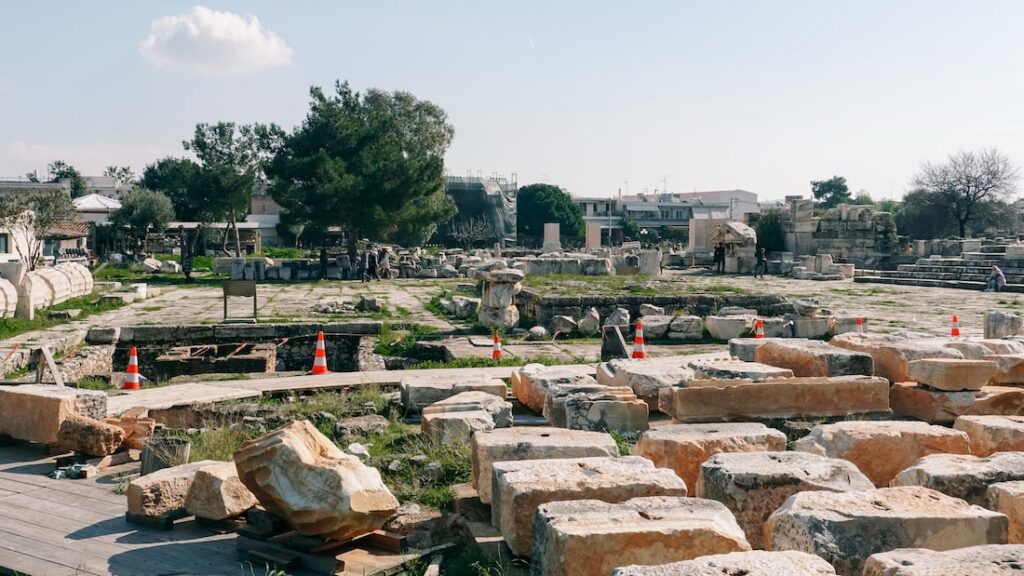
The first thing you’ll see when entering the archaeological site of Elefsina is the Roman Court. That’s a big square, 65 m long and 40 m wide, and at its northern part, you can see the end of the Iera Odos. The Iera Odos, or Sacred Way, was the most important road of antiquity, connecting Athens and Eleusis.
There was a fountain and a triumphal arch on the eastern side through which a road led to the port. A second arch, this time on the western side, marked the beginning of a road connecting the Sanctuary to Megara.
One might rightly wonder why its name is Roman Court. That’s because its construction was decided by Roman Emperors. Hadrian (117-138 AD) started the project, Antoninus Pius (138-161 AD) continued it, and Marcus Aurelius (161-180 AD) concluded it.
The temple of Artemis Propylaia and Father Poseidon
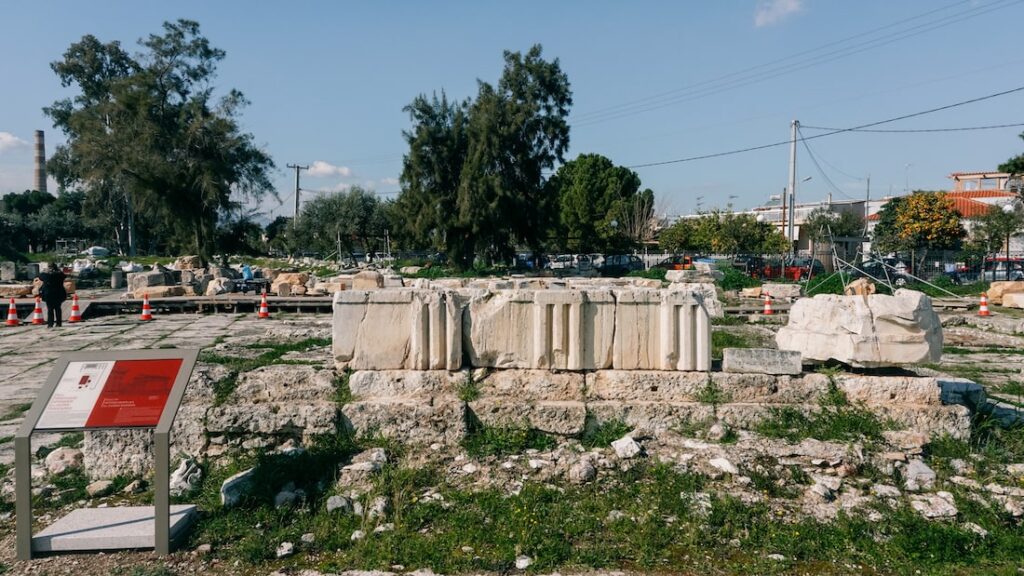
Now, within the premises of the Roman court, you can see various places of interest. The most important one is undoubtedly the Temple of Artemis Propylaia and Father Poseidon.
Roman Emperors wanted to construct a temple that would resemble the one of Athena Nike in the Acropolis of Athens. Indeed, the temple’s size is identical to that in the Acropolis, and it’s made of Pentelic marble. Construction of the temple dates back to the 2nd century AD.
Finally, on the northern side, you can see the ruins of a pedestal. It was at this spot that most likely a statue of Poseidon stood.
The Eschara
The Eschara is one of the most bizarre remnants of the site. That’s actually an altar dating back to Roman times, but it’s safe to assume that a wall pre-existed in its place. The Eschara is a well almost 2 meters deep. On its bottom, the fire was lit, and above it, there was a metal grate (eschara) where the sacrificed animals were placed.
Portico
There was also a portico at the spot. Porticos (roofed oblong buildings) were a typical architectural element of the era. You could find them in squares, markets, and—apparently—sanctuaries. In Eleusis, the porticos offered the pilgrims a place to stay overnight, protected by the weather. In Eleusis, the portico had an L-shape and extended from the Sacred Way to the Roman Court.
The Fountain
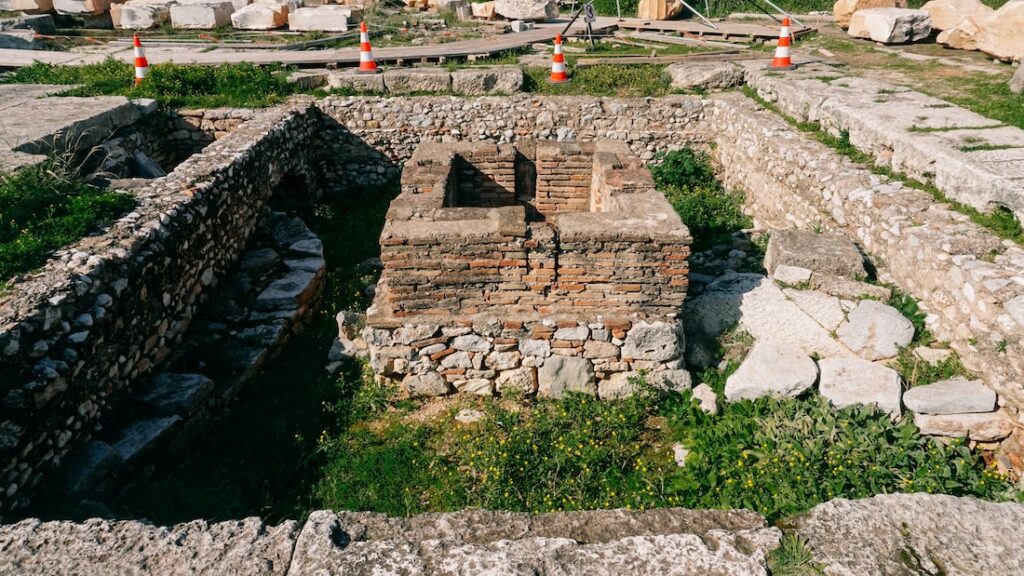
The Fountain was also part of the court. That’s where the worshippers would clean themselves after a long journey before entering the main sections of the Sanctuary.
The East and West Triumphal Archs of Eleusis
On both sides of the Eleusis sanctuary, you can see triumphal arches. These are gates leading outside the Sanctuary. On the East Arch, there were places for accommodation, public baths, etc., while from the West Arch started the road to the city of Eleusis. Both arches imitated the style of Hadrian’s Arch in Athens, and the material used is Pentelic marble.
Kallichoron Well
The Kallichoron Well dates back to the beginning of the 5th century BC. Due to the Sanctuary’s reconstruction in Roman times, what we see today is a mixture of the ancient well and Roman buildings. The well’s depth is 6 meters, and part of it is made of Eleusinian stone.
As for the background story, it has its origin in the Homeric Hymn to Demeter. That’s where goddess Demeter stopped to rest after searching in vain for her daughter Persephone. Persephone had to paint all the flowers of the world; however, Hades, the underworld god, abducted her before she concluded her task. As a result, and in order to convince Zeus, Demeter caused a drought that made people suffer. Only after this incident did Zeus allow Persephone to return to her mother.
Apart from being a cornerstone event of Greek Mythology, the myth was one of the most important in the Eleusinian Mysteries. One of the most popular feasts of the mysteries starts around the Kallichoron Well as a tribute to goddess Demeter.
The Greater Propylaea of Eleusis
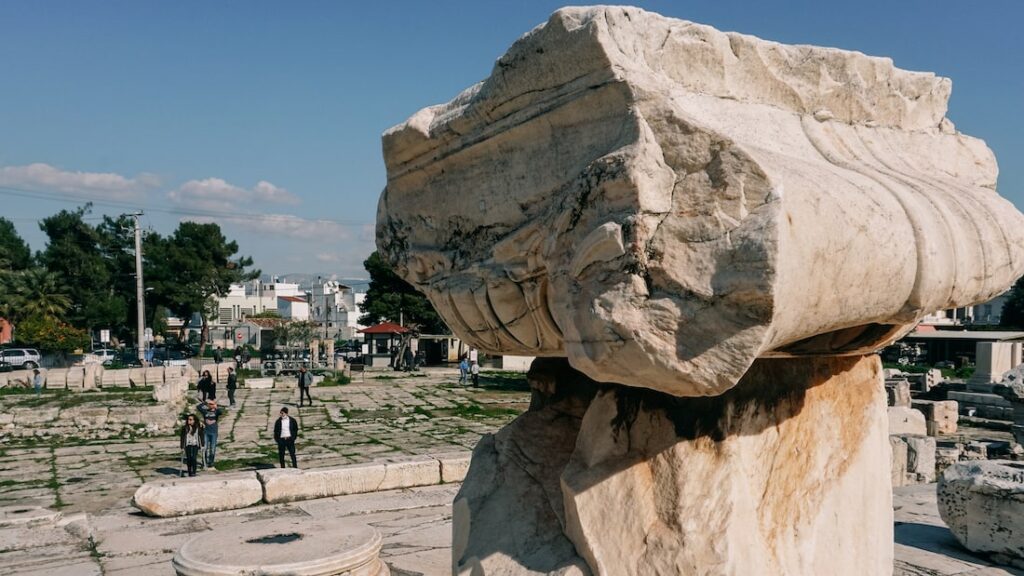
The Greater Propylaea of Eleusis, an exact copy of the Propylaea of the Acropolis of Athens, was the gateway to the Sanctuary during Roman times. Of course, the Propylaea was oriented towards Athens and consisted of two porches with six Doric columns.
The Roman Cistern
Within the premises of the Greater Propylaea, the existence of a big cistern wasn’t just an attraction. Its role was to secure sufficient amounts of water for the needs of the Sanctuary. Impressively enough, the cistern used a water filtration system on its lower level. On the top level, the clean water was pumped out.
The Lesser Propylaea of Eleusis
The Lesser Propylaea lies where the Peisistratean North Pylon stood in former times. They served as the entrance to the Sanctuary of Elefsina before the extension to the north and the subsequent construction of the Greater Propylaea. The Lesser Propylaea had two porticoes: one leading to the north and another one leading to the Telesterion.
The Telesterion of Ancient Eleusis

That’s the most important building of the Eleusis archaeological site. After following the Processional Road -which was the Sacred Road’s continuation- from the Lesser Propylaea, you reach the Telesterion.
The Telesterion is where most of the Eleusinian Mysteries rituals took place. It’s impressive that the Telesterion we see today dates back to the 5th century BC. Planned by the Parthenon’s architect Iktinos, the Telesterion is an almost square building, and its side measures 51,5 meters. The east side had twelve Doric columns, and the building had several entrances.
In the roof’s center, the “Opaion” brought natural light to the building. Finally, in the center was the Anactoron, where the sacred objects were stored. Nobody was allowed to enter except the Hierophant, the highest priest. On the starting night of the Eleusinian Mysteries, the Hierophant revealed the sacred objects. The Hierophant’s throne was just outside of the Anactoron.
The pilgrims gathered in an area called the Sacred Court, straight outside the Telesterion. As for the remains on the eastern side of the Telesterion, they belong to the Portico of Philo.
The Upper Court
The Upper Court is an extension of the Telesterion after the latter burned down during an invasion in 170 AD. Its extension began during the times of Marcus Aurelius and followed the classical style of the structure. It is trapezoid in shape. On the northern side, you can also see the Temple of Faustina, also built by Marcus Aurelius.
Finally, on the hill’s top and east of the Temple of Faustina stands the Church of the Virgin Mary (Panagia Mesosporitissa). The church is one of the earliest Christian basilicas of Eleusis.
The Mithraeum
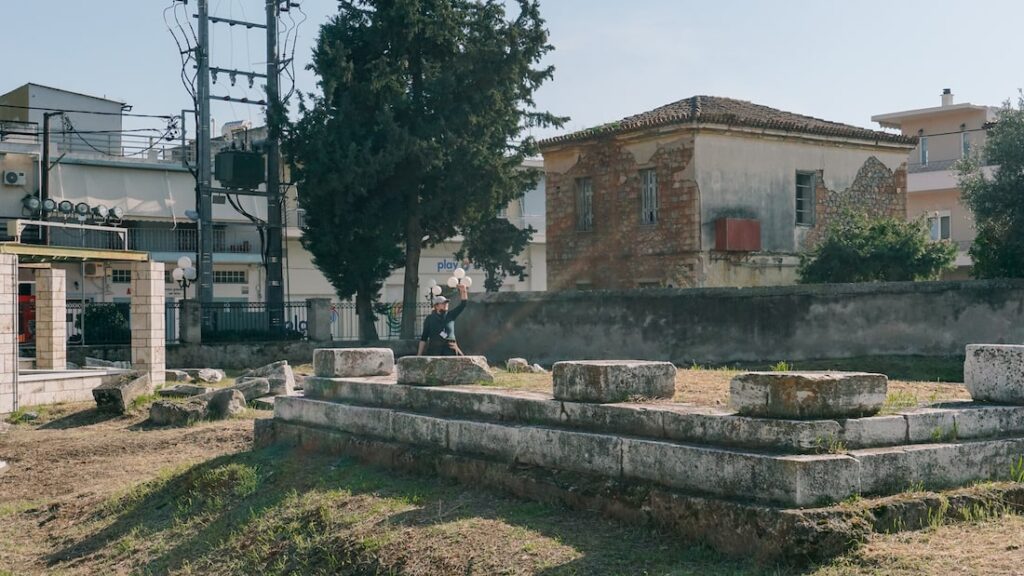
Last but not least, there’s also a Mithraeum in the archaeological site of Eleusis. The Mithraic temples were gathering places for the followers of the Indo-Iranian god Mithras. During the Roman Times, the cult of Mithras gained many followers. The Mithraeum of Eleusis consists of two rooms, and you can see it close to the Lykourgean Fortification.
The Archaeological Museum of Eleusis
The Archeological Museum of Eleusis is inside the site. The building hosting it dates back to 1890, and there you can see numerous findings from the excavations. The collection dates back to the 5th century BC.
The museum is currently closed for reconstruction.
Practical Info for your visit to the Archaeological site of Eleusis
The archaeological site of Eleusis is open on Mondays and Wednesdays to Sundays between 8:30 and 15:30 (closed on Tuesdays). The tickets cost 6 euros (reduced: 3 euros).
You can easily access the archaeological site of Eleusis by car. Alternatively, you can use public transport:
- Bus 876 from Aigaleo or Agia Marina metro stations (Line 3).
- Buses 845 and 871 from Piraeus.
- Intercity Bus to Megara (starting from Agioi Asomatoi square at Thision).
Facts about the Eleusinian Mysteries
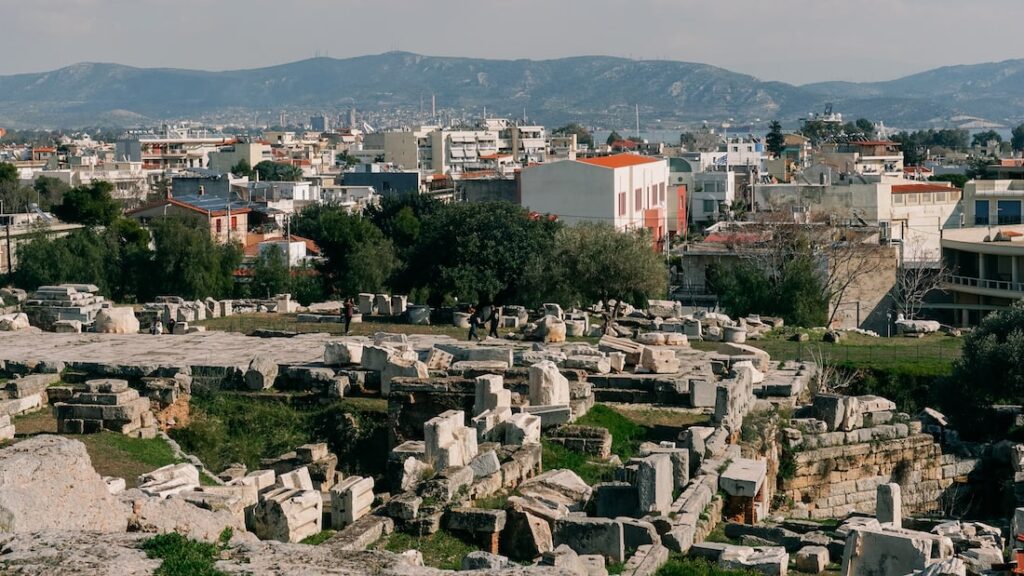
Due to its importance, the Sanctuary of Eleusis acquired a Panhellenic character already from the 8th century BC. Therefore, it was a matter of time to become an epicenter of cultural and spiritual life. The Eleusinian Mysteries were one of the most iconic festivals of Athens.
Therefore, this section includes several Eleusinian Mysteries facts to highlight the Eleusis Sanctuary’s significance.
To whom were the Eleusinian Mysteries dedicated?
The Eleusinian Mysteries were dedicated to the goddess Demeter and her daughter Persephone. It is safe to assume that the Mysteries revolved around the hope for life after death. Persephone’s abduction by Hades and her return represents the cycle of life and death, together with hope.
The three phases of this ritual are descent (loss), the search, and the ascent.
What are the Lesser Eleusinian Mysteries?
The Lesser Eleusinian Mysteries took place in the eighth month of the Attic calendar, called Anthesteria. To bring it closer to our calendar, we can say that Anthesteria was a period between February and March. The Lesser Mysteries were somehow a preparation for the Greater Mysteries that followed later in the year.
The participants sacrificed a piglet to Demeter and Persephone and purified themselves in the water of Illisos, an Athenian river. The people who successfully participated in the Lesser Eleusinian Mysteries were called initiates (Greek: μύσται), and they earned the right to be present at the Greater Mysteries.
What are the Greater Eleusinian Mysteries?

The Greater Eleusinian Mysteries were the main event. They took place in the third month of the Attic calendar, called Boedromion, which is from late August to late September/beginning of October. The Greater Eleusinian Mysteries lasted nine days.
As a prelude to the Mysteries, on the 17th day of Boedromion, a festival called Epidavria started, dedicated to Asklepios at Epidaurus sanctuary. Then, two days later, on the 19th of Boedromion, the Eleusinian Mysteries began at the Telesterion of Eleusis.
Was Kykeon a drug?
Among the words that the initiates should recite before entering the Telesterion was that they “have drunk the kykeon.” Kykeon was a drink of the Eleusinian Mysteries consisting of water, barley, and pennyroyal. Historians assume that the drink had psychotropic effects due to a fungus growing on barley called ergot. You can even call it an “ancient version of LSD.”
What kind of rites were held in the Eleusinian Mysteries?
In brief, the Eleusinian Mysteries contained three sorts of rites, all of which took place in the Telesterion.
The dromena. This translates to “things done.” The ritual was probably a dramatic reenactment of the myth of Demeter and Persephone.
The deiknumena. This means “the things shown.” In this part, the hierophant had the critical role of displaying the sacred objects.
The legomena. Finally, the legomena is about “the things said” and refers to various comments accompanying the deiknumena.
It is worth noting that we don’t have much knowledge about the rituals. The reason is that those betraying the secret religious rites were punished with death.
Who could participate in the Eleusinian Mysteries?

There were four categories of people who could participate in the Eleusinian Mysteries.
- The Hierophant, together with other priests and priestesses.
- The initiates.
- People who already participated at least once in former times.
- Finally, those who learned the mysteries of Demeter and have attained epopteia (contemplation).
What brought an end to the Eleusinian Mysteries?
After being held for almost two thousand years, the Eleusinian Mysteries ceased under Roman Emperor Theodosius I. Theodosius closed all sanctuaries in 392 AD. Christianity gained increased popularity during these times, and there was no room for the Mysteries anymore.
Everything came to an end in 395/6 AD when the King of Goths, Alaric I, destroyed the sacred sites, among them Eleusis.
Guided tours at the Eleusis Archaeological site
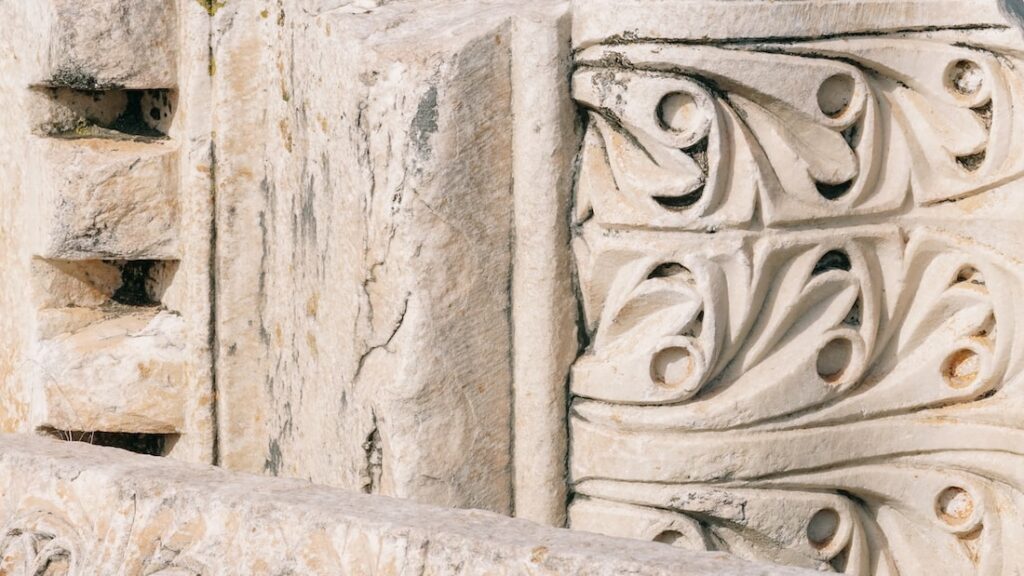
While you can easily visit the Eleusis archaeological site on your own, there are plenty of guided tours to choose from. Some of them include hotel pick-up, and a professional guide always walks you through the site and offers background information.
If you are a group traveling in Greece and interested in its antiquity, it deserves considering this Elefsina tour. It makes sense to book it as a group because the price is steep for one person. Your guide will pick you up from your hotel and offer you a tour to remember.
On the other hand, for a more reasonably priced tour, you can see this full-day excursion to the Sacred City of Elefsina. The tour will also stop at the Daphni Monastery, one of the most important Byzantine churches.
Final thoughts about Eleusis
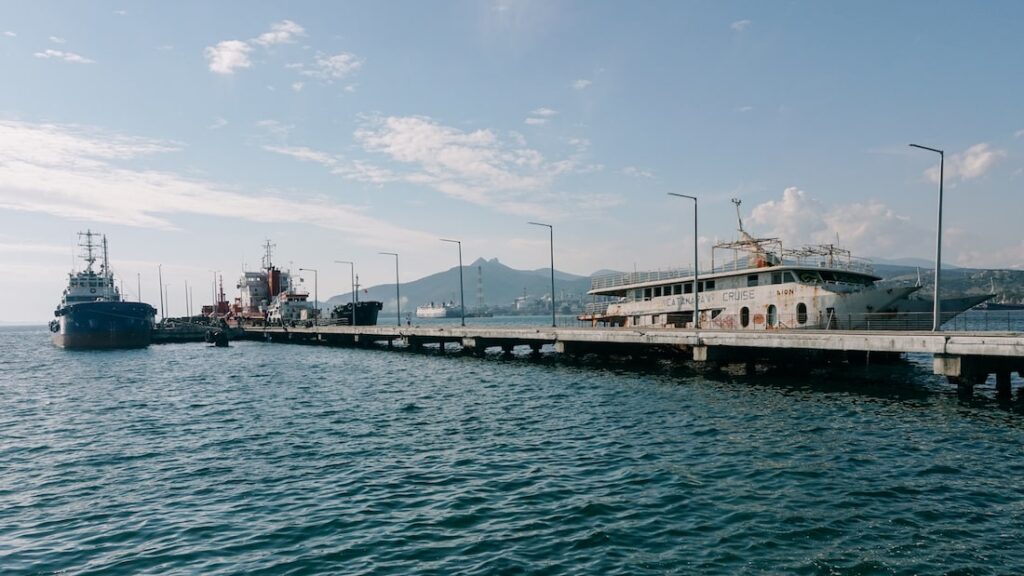
The modern city of Elefsina (Greek: Ελευσίνα) lies by the sea and is one of the European Capitals of Culture for 2023. While it’s not among the most obvious things to see when traveling to Athens, I can highly recommend visiting the Eleusis archaeological site. The place is full of fascinating ancient ruins and history, and the mysteries of Eleusis are everywhere in the atmosphere.
Finally, after visiting the site, you can walk towards the seaside and enjoy a stroll in the beautiful promenade. If you’re there during September, make sure to check out the Aeschylia Festival, one of Greece’s oldest festivals. Obviously, the name derives from Aeschylus, the famous ancient Greek tragedian, and Eleusis’ most prominent son.
So, make sure to visit Eleusis if you travel to Athens, and let me know what you think about this stunning ancient location in the comments.
More articles about Ancient Greece: Delphi guide, Mycenae, Epidaurus, Ancient Corinth, Nemea, Acrocorinth
Pin it for later
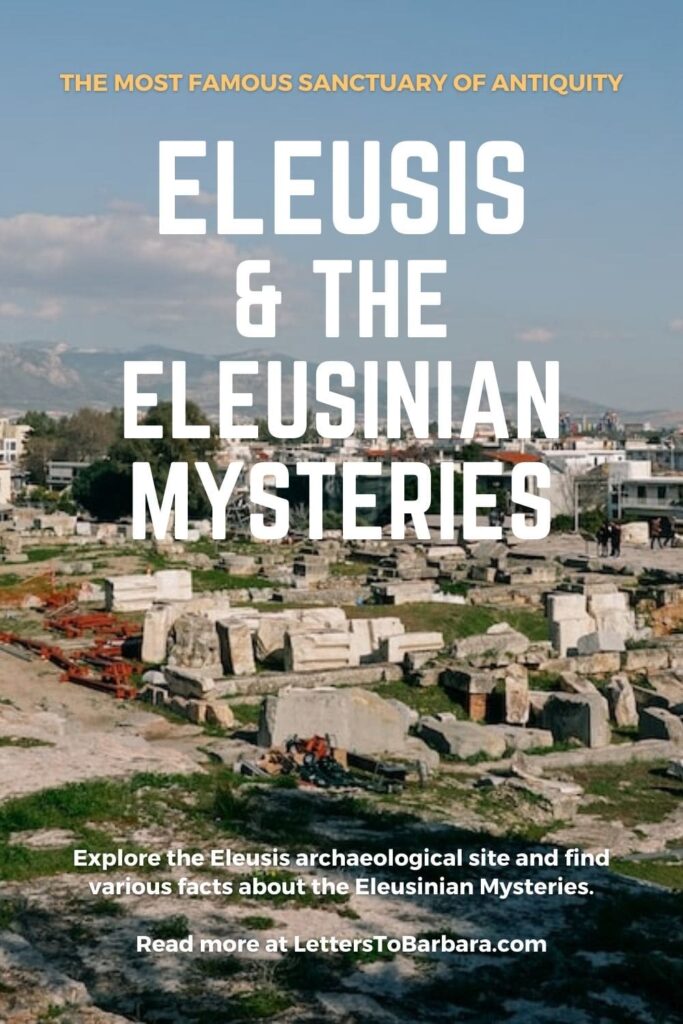
Share this article with your friends if you enjoyed reading about the Eleusis Archaeological Site.
Last Updated on May 10, 2025 by George Pavlopoulos


